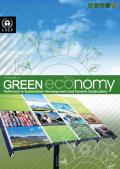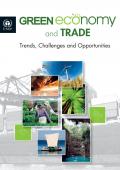A green economy can be defined as one that results in improved human well-being and social equity, while significantly reducing environmental risks and ecological scarcities. It is characterised by substantially increased investments in economic sectors that build on and enhance the Earth’s natural capital or reduce ecological scarcities and environmental risks. These investments are driven or supported by national policy reforms and the development of international policy and market infrastructure.
Both fiscal policy and public finance can be key drivers of a country’s transition to a greener economy—or a brake on green growth and low carbon job creation. This paper explores the linkage and options available to policy-makers considering ways to drive and accelerate the transition to lowercarbon, more resource-efficient and socially-inclusive economic growth.

The Green Economy Report is compiled by UNEP’s Green Economy Initiative in collaboration with economists and experts worldwide. It demonstrates that the greening of economies is not generally a drag on growth but rather a new engine of growth; that it is a net generator of decent jobs, and that it is also a vital strategy for the elimination of persistent poverty. The report also seeks to motivate policy makers to create the enabling conditions for increased investments in a transition to a green economy.
The report includes chapters on the following areas:
- Agriculture
- Fisheries
- Water
- Forests
- Renewable Energy
- Manufacturing
- Waste
- Buildings
- Transport
- Tourism
- Cities
- Modelling
- Finance

This publication provides a summary for policy makers of the OECD’s Towards Green Growth publication. The publication summarises the development of the OECD’s Green Growth Strategy and covers issues such as what green growth is and why it is needed, sources of green growth, a framework for green growth strategies, green growth initiatives, how green growth will affect employment, addressing distributional concerns, international co-operation, monitoring progress towards green growth, constructing green growth strategies and the next steps of the OECD Green Growth Strategy.
Policies that promote green growth need to be founded on a good understanding of the determinants of green growth and of related trade-offs or synergies. They also need to be supported with appropriate information to monitor progress and gauge results.
Monitoring progress towards green growth requires indicators based on internationally comparable data. These need to be embedded in a conceptual framework and selected according to well specified criteria. Ultimately, they need to be capable of sending clear messages which speak to policy makers and the public at large.
This report responds to these needs and accompanies the OECD Green Growth Strategy. It presents a conceptual framework, a proposal for developing green growth indicators and results for selected indicators derived from OECD databases.
The indicators presented in this report are a starting point: they will be further elaborated as new data become available and concepts evolve. They are accompanied with a measurement agenda that will help addressing the most pressing data development needs.
